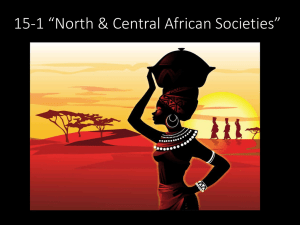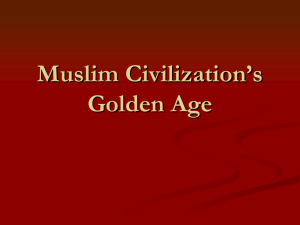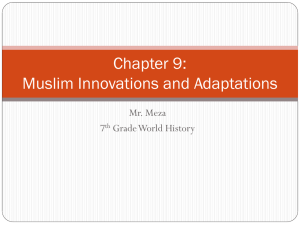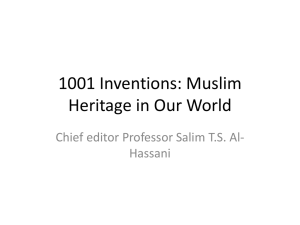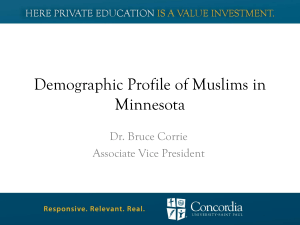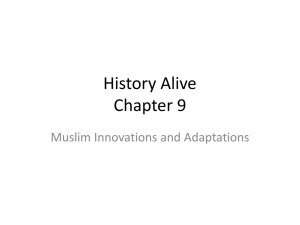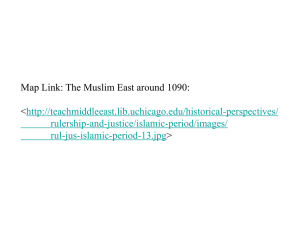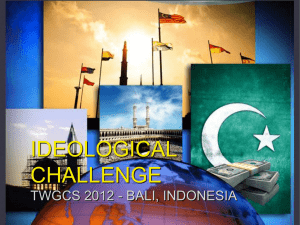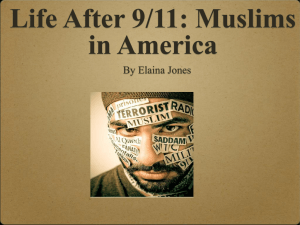North and Central African Societies
advertisement
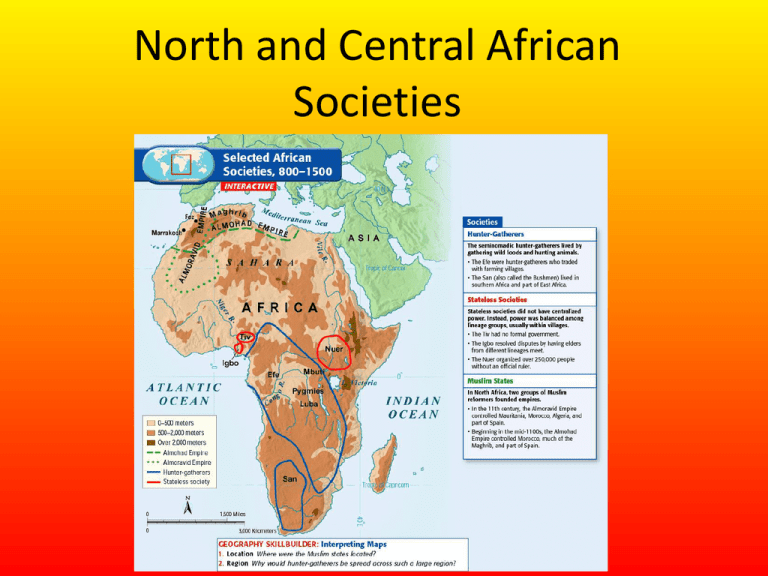
North and Central African Societies Setting the Stage • Throughout history, different groups of Africans have found different ways to organize themselves to meet their political, economic, and social needs. In the varied regions of Africa, climate and topography, or landforms, influenced how each community developed. Hunting-Gathering Societies • Oldest form of social organization Hunting-Gathering Societies • Forest Dwellers – The Efe- live in groups of 10 to 100 people • they are all related, they occupy their own shelter of grass and brush but don’t live there long because they are nomadic. – Women- are the gatherers in this society – Men and younger boys- do all the hunting together but sometimes they go solo – Diet- they add to their diet by trading honey, game and other products for crops from nearby farms Social Structure • Respected older male is the tribe leader • He does not give orders though like a chief would • They are not governed by formal written laws • They settle arguments with long discussions Stateless Societies • Lineage- descendants of a common ancestor, past generations and future generations, they feel strong loyalties towards each other. Stateless Societies • Stateless Societies- Many Lineages took the place of rulers, no one family had power over the next • Igbo Tribe- if dispute arose respected elders of different lineages would meet and settle it. – Europeans would force them to pick one ruler in the 19th century Tracing Family Descent • Based on possession and property and how they are passed on • Patrilineal- Through father, passed down from father to son, when a son marries, his children remain part of his fathers extended family • Matrilineal- Through their mothers ancestors, young men from their mothers family inherit land and wealth. Even in a matrilineal society men still hold authority Age-Set System • Young people form close ties to individuals outside their lineage • Each age-set passes together through clearly identified life stages, such as warrior or elder, Ceremonies mark the passage of each new stage; men and women both go through different age sets. Muslim States • After Muhammad's death in 632, Muslims swept across the northwest part of the continent – Islam played a vital role in North Africa • By 670- Muslims ruled Egypt and had entered the Maghrib- the part of North Africa that is today the Mediterranean coast of Libya, Tunisia, Algeria and Morocco • Muslims believed that God’s law is a higher authority than any human law, Muslim rulers often relied on religious scholars as government advisors Islamic Law • Following the law is a religious obligation • Various Muslim states had ethnic and cultural differences; they would have different interpretations and schools of Islamic law. Almoravid Reformers • 11th century, Started when a group of Berber Muslims made a hajj or pilgrimage to Mecca. They convinced a Muslim scholar from Morocco named Abd Allah Ibn Yasin to return with them to teach people about Islam • Almoravids- strict religious brotherhood, Ibn Yasin led the Almoravids in an effort to spread Islam through conquest. After Ibn Yasin death in 1059 • The Almoravids went on to take Morocco and found their capital Marrakech, overran Ghana in 1076 and captured southern parts of Spain where they would be called the Moors Almohads Take Over • Mid 1100’s, Almohads- another group of Berber Muslim reformers, seized power from the Almoravids. • Ibn Tumart- criticized the former rulers for moving away from traditional practice of Islam, urged his followers to strictly obey the teachings of the Qur’an and Islamic Law. • Abd al Mumin- leader of the Almohads, fought to over throw the Almoravids and restore traditional Islamic beliefs Almohads cont. • Kept capital at Marrakech, their territory stretched from Marrakech to Tripoli and Tunis on the Mediterranean. • The Almohad empire broke up into individual Muslim Dynasties; they had lasted for over 100 years and united Maghrib under one ruler for the first time.

